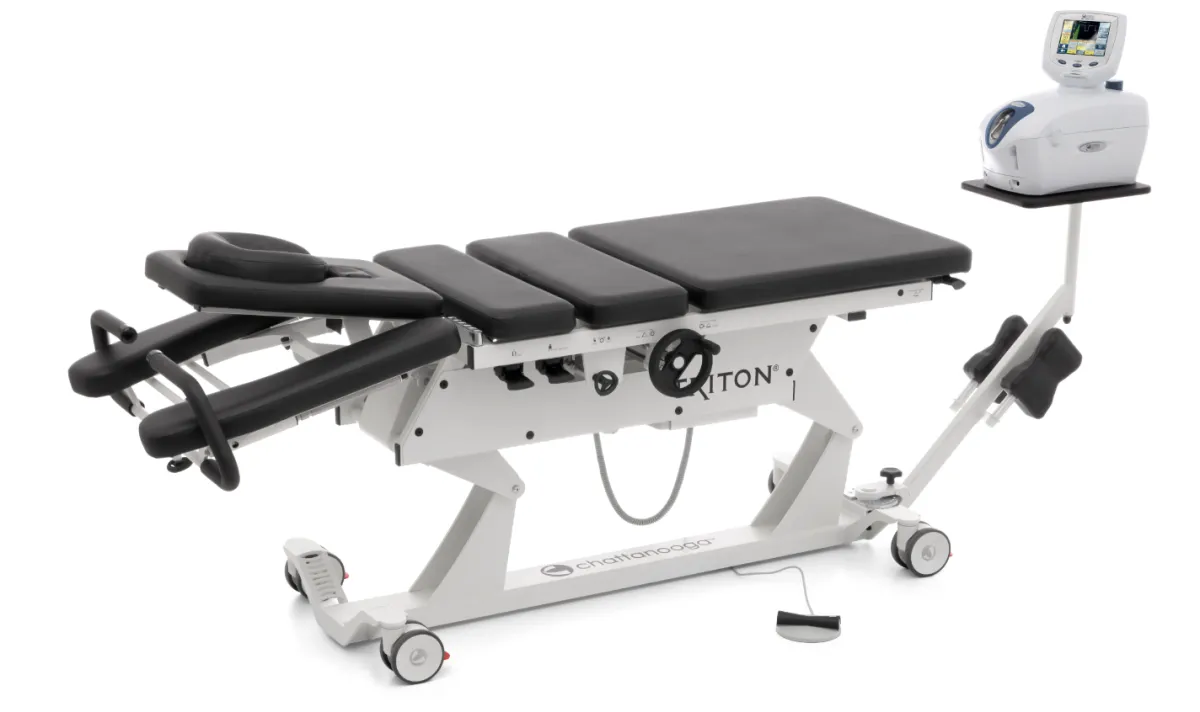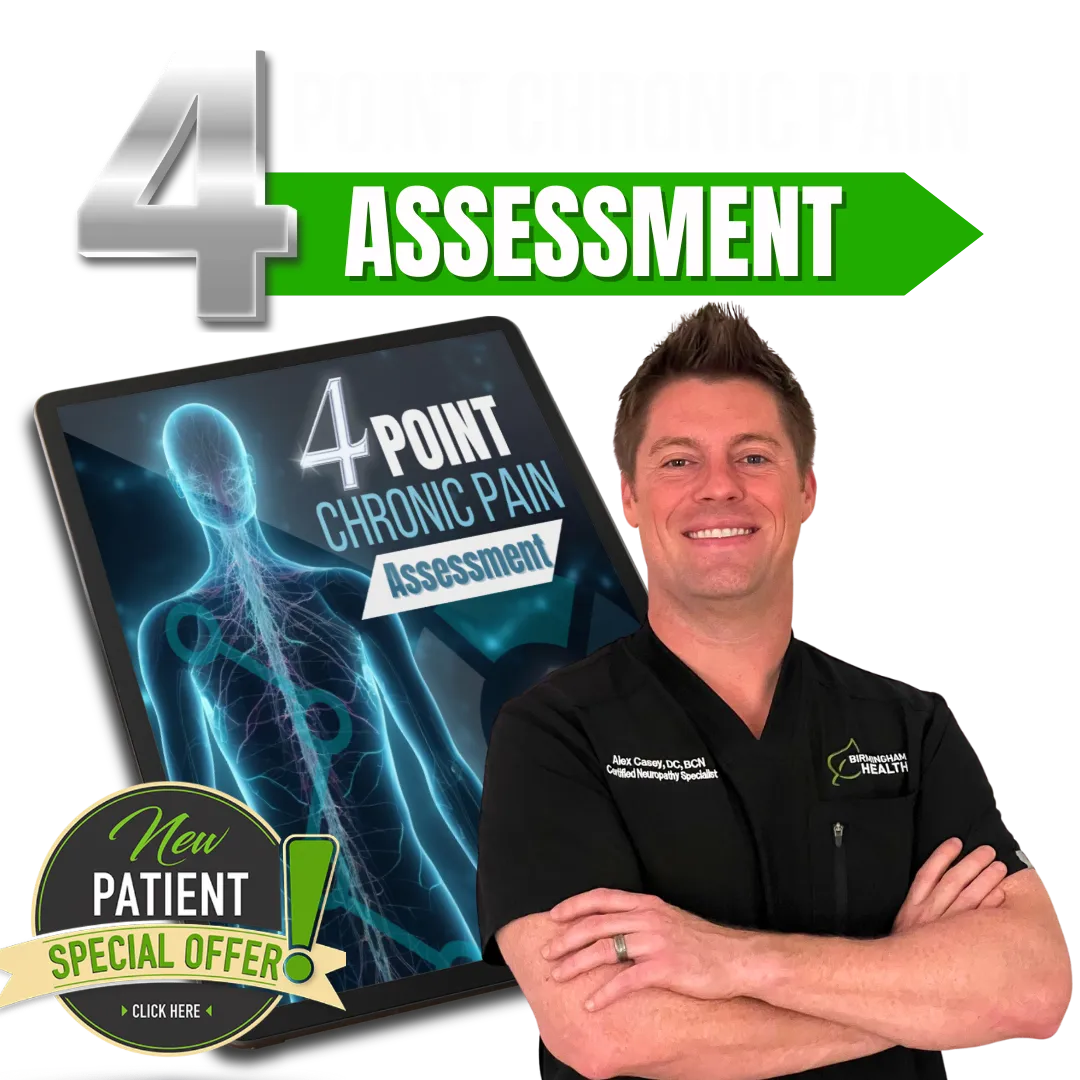Find Relief From Back Pain Birmingham, AL
Suffering From Back Pain?
It's probable that you'll experience back pain at some point in your life, whether in the upper, middle, or lower back. Nearly 32 million Americans currently grapple with back pain, and approximately 80% of the population is expected to encounter it at some juncture.
Given these significant numbers, it's evident why back pain stands as the primary cause of disability in the United States. Understanding the origins, prevention techniques, and optimal remedies for lower back pain is crucial.
Bulging, Herniated or Degenerative Disc Disease
Have you been wrestling with relentless back pain, perhaps due to degenerative disc disease, a herniated or bulging disc, sciatica, or other spinal issues?
And has the conversation with your physician started veering towards the surgical, or daily medication route?
There's an alternative path you might want to explore first: spinal decompression therapy
This non-surgical treatment has been a game-changer for many struggling with conditions like degenerative discs, facet syndrome, herniated discs, and even the dreaded spinal stenosis.
And if you're thinking, "But I've already tried surgery," don't worry. Even if you're navigating the rough waters of failed back surgery syndrome, spinal decompression therapy could still be a beacon of hope.

Subluxations
Subluxation is a term used in the chiropractic field to describe what happens when one of the vertebrae in your spine moves out of position. The word subluxation is derived from the Latin words meaning somewhat or slightly (sub) and to dislocate (luxate). When this happens, the misaligned vertebrae creates pressure and stress on the spinal nerves, blood vessels, and surrounding muscles.
This pressure and stress can cause an imbalance in the body’s normal processes as the nerves in the spinal column extend to the entire body and its organs. As time goes on and the uncorrected subluxation settles, the damage to the nerve gets progressively worse and different stages of subluxation degeneration set in.
Subluxations can occur in a number of ways. A car accident, athletic injuries, birth trama, pregnancy, a fall, sudden jar, or other traumas are all examples of unique instances that may cause a subluxation. The other occurrence of subluxation comes from regular actions such as improper sleeping position, poor posture, or incorrect lifting processes.
Phases of Subluxation Degeneration
Degeneration Phase 1
First your spine loses its normal balance. There may be a loss of normal spinal curves. Your nerves may be affected and the vital life energy that flows over them is interfered with. Also your joints, discs, nerves and posture are stressed and age more quickly. Surprisingly, there may be no pain other than occasional minor discomfort. Also present may be a slight lessening of energy and slight height loss. Response to spinal care is generally good.
Degeneration Phase 2
Here there is a much greater degree of decay, disc narrowing and bone spurs (deformations); postural changes are much worse. This condition is very common (by age 40, 80% of males and 76% of females exhibit moderate disc degeneration). Spinal canal narrowing or stenosis may occur. This phase is characterized by more common aches and pains, fatigue, and a diminished ability to cope with stress. Height continues to decrease. With chiropractic care significant improvement is possible.

Degeneration Phase 3
Here there are more postural imbalances, increased nerve damage, permanent scar tissue and advanced bone deformation. Physical and/or mental weakness or disability begin. Also found in this phase are permanent loss of height and loss of energy. With care some reversal is possible.
Degeneration Phase 4
This is the most advanced stage of subluxation degeneration. The postural imbalance is severe and motion is limited. There is severe nerve damage, permanent scar tissue is formed and the bones may begin to fuse. In this phase we find pain, various degrees of physical or mental disability, and continued loss of energy and height. By now the condition is considered irreversible, although chiropractic may give some symptomatic relief.
Muscular Sprains and Tendon or Ligament Strains
Strains and sprains are common occurrences, often arising when individuals engage in tasks that strain their muscles and ligaments beyond their accustomed limits. For instance, someone attempting to run a marathon without prior conditioning is prone to overexertion and subsequent damage to these structures. Ligament sprains result from stretching a ligament beyond its capacity, leading to tears, while muscular strains typically stem from lifting excessively heavy objects or sudden twisting motions.
Injuries to the ligaments and muscles of the back can cause intense pain, accompanied by swelling and bruising in the surrounding area. Given their close association with the spine, strains and sprains often respond well to chiropractic intervention.
At our Advanced Family Chiropractic Center, we offer comprehensive treatment for these injuries, equipped with the expertise and resources to address them effectively.
The Importance Of Spine Health
Our spinal discs are a bit like neglected houseplants – they don't always get the oxygen and nutrients they need.
Spinal decompression therapy is like a spa day for your discs, providing them with the movement and care they've been missing. Through a series of stretching and relaxing phases, this therapy aims to give your problem disc a little breathing room, creating a vacuum effect that not only nudges the disc back to its rightful place but also ushers in a fresh supply of healing nutrients.
Typically, a session lasts about an hour. Many patients start to see a significant reduction in pain after just a few sessions. For those who are good candidates and adhere to the therapy plan, the success rate of spinal decompression therapy is impressively high.
So, if you're standing at the crossroads of spinal health, pondering surgery, why not take a moment to consider this alternative? It could be the gentle, yet effective, approach your back has been looking for.
Before you opt for surgery, explore the possibility of spinal decompression therapy.
Every person who is interested in spinal decompression therapy will be evaluated. To schedule an appointment and see if you are a candidate for this breakthrough procedure give us a call at (205) 732-7496 or click on the image below to schedule 4-Point Chronic Pain Assessment today!

The truth today is that the majority of chronic pain patients can be helped.
The difficulty is finding a provider that you can turn to for help.
Schedule Now, So We Can Find The Root Cause Of Your Pain and Get You Back To Loving Life Again!
New Patient Special Limited Time Offer. Price Valid for 11/16/2024 (Normally $297)
© 2024 Birmingham Health - All Rights Reserved
This website does not provide medical advice. The information, including but not limited to, text, graphics, images, and other material contained on this website are for informational and educational purposes only. No materials, opinions, products, and services on this site are intended to be a substitute for professional medical advice, diagnosis, or treatment. Always seek the advice of your physician or other qualified professional health care provider with any questions you may have regarding a medical condition or treatment and before undertaking a new health care regimen, and never disregard professional medical advice or delay in seeking it because of something you have read on this website.
If you have or suspect you may have a health problem or need immediate medical attention, you should consult with a healthcare provider.
We are not responsible for how the content on this website is interpreted or what reliance is placed on it. We do not accept any liability and responsibility for the results of any action taken on the basis of the information provided on this website.





